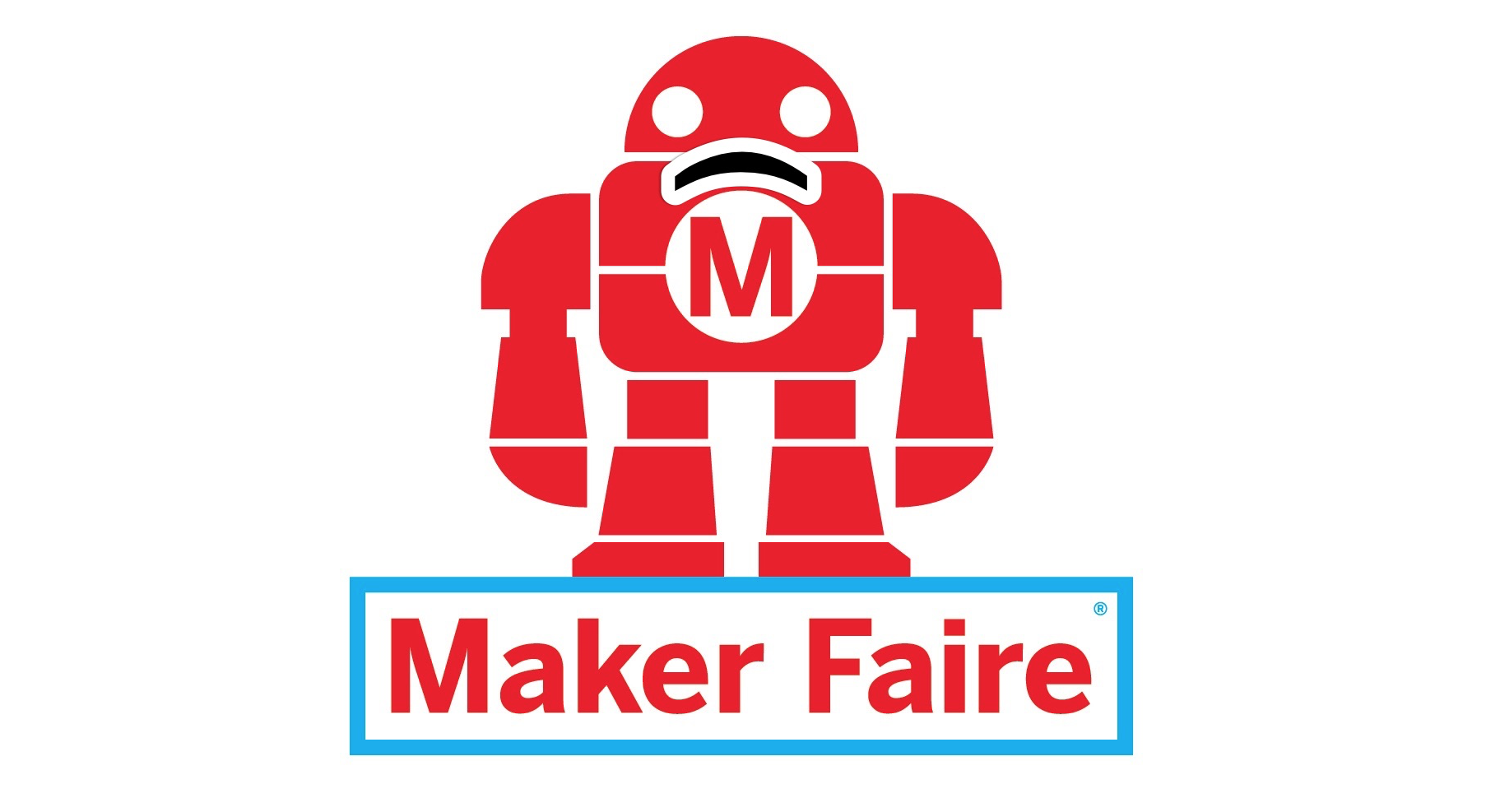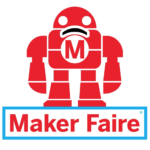Bankrupt Maker Faire revives, reduced to Make Community
Maker Faire and Maker Media are getting a second chance after suddenly going bankrupt, but they’ll return in a weakened capacity. Sadly, their flagship crafting festivals remain in jeopardy, and it’s unclear how long the reformed company can survive.
Maker Media suddenly laid off all 22 employees and shut down last month, as first reported by TechCrunch. Now its founder and CEO Dale Dougherty tells me he’s bought back the brands, domains, and content from creditors and rehired 15 of 22 laid off staffers with his own money. Next week, he’ll announce the relaunch of the company with the new name “Make Community“.
Read our story about how Maker Faire fell apart
The company is already working on a new issue of Make Magazine and the online archives of its do-it-yourself project guides will remain available. I hopes to keep publishing books. And it will continue to license the Maker Faire name to event organizers who’ve thrown over 200 of the festivals full of science-art and workshops in 40 countries. But Dougherty doesn’t have the funding to commit to producing the company-owned flagship Bay Area and New York Maker Faires any more.

“We’ve succeeded in just getting the transition to happen and getting Community set up” Dougherty tells me. But sounding shaky, he asks “Can I devise a better model to do what we’ve been doing the past 15 years? I don’t know if I have the answer yet.” Print publishing proved tougher and tougher recently. Combined with declining corporate sponsorships of the main events, Maker Media was losing too much money to stay afloat last time.
“On June 3rd, we basically stopped doing business. And, you know, the bank froze our accounts” Dougherty said at a meetup he held in Oakland to take feedback on his plan, according a recording made by attendee Brian Benchoff. Grasping for a way to make the numbers work, he told the small crowd gathered “I’d be happy if someone wanted to take this off my hands.”

Maker Faire [Image via Maker Faire Instagram]
For now, Dougherty is financing the revival himself “with the goal that we can get back up to speed as a business, and start generating revenue and a magazine again. This is where the community support needs to come in because I can’t fund it for very long.”

Maker Faire founder and Make Community CEO Dale Dougherty
The immediate plan is to announce a new membership model next week at Make.co where hobbyists and craft-lovers can pay a monthly or annual fee to become patrons of Make Community. Dougherty was cagey about what they’ll get in return beyond a sense of keeping alive the organization that’s held the maker community together since 2005. He does hope to get the next Make Magazine issue out by the end of summer or early fall, and existing subscribers should get it in the mail.
The company is still determining whether to move forward as a non-profit or co-op instead of as a venture-backed for-profit as before. “The one thing i don’t like about non-profit is that you end up working for the source you got the money from. You dance to their tune to get their funding” he told the meetup.
Last time, he burned through $10 million in venture funding from Obvious Ventures, Raine Ventures, and Floodgate. That could make VCs weary of putting more cash into a questionable business model. But if enough of the 80,000 remaining Make Magazine subscribers, 1 million YouTube followers, and millions who’ve attended Maker Faire events step up, pehaps the company can find surer footing.
“I hope this is actually an opportunity not just to revive what we do but maybe take it to a new level” Dougherty tells me. After all, plenty of today’s budding inventors and engineers grew up reading Make Magazine and being awestruck by the massive animatronic creations featured at its festivals.
Audibly peturbed, the founder exclaimed at his community meetup “It frustrates the heck out of me thinking that I’m the one backing up Maker Faire when there’s all these billionaires in the valley.”

Powered by WPeMatico
Bird plans to hire 1,000 people in Paris
Scooter startup Bird is betting on the French market in a significant way. The company plans to open up its biggest European office in Paris. Eventually, Bird wants to hire 1,000 people by mid-2021, which is a meaningful number for a company that has been around for a couple of years.
Paris is an important market for Bird, and all scooter startups in general. It’s a relatively small city — when it comes to footprint, Paris is smaller than San Francisco. But it’s also a dense city. And of course, there are a ton of tourists who come to Paris just for a few days.
That’s why 12 different companies launched a scooter-sharing service in Paris (yes, twelve). But Les Échos recently reported that many of them have already left the city. Lime, Bird, Circ, Dott, Jump and B-Mobility are still around.
It’s a capital-intensive industry, and Bird has already raised a ton of money to outlive the competition. But money is just one thing.
Opening an office in Paris is also important to show city officials that Bird is serious about this market. Last month, the City of Paris announced that it would limit the number of scooter companies in Paris. They will hand out two or three licenses to operate. And Bird certainly wants to be one of them.
Bird will also use its Paris hub to educate users about safety. The company plans to hand out free helmets if you attend a safety training session.
Powered by WPeMatico
Waymo has now driven 10 billion autonomous miles in simulation
Alphabet’s Waymo autonomous driving company announced a new milestone at TechCrunch Sessions: Mobility on Wednesday: 10 billion miles driving in simulation. This is a significant achievement for the company, because all those simulated miles on the road for its self-driving software add up to considerable training experience.
Waymo also probably has the most experience when it comes to actual, physical road miles driven — the company is always quick to point out that it’s been doing this far longer than just about anyone else working in autonomous driving, thanks to its head start as Google’s self-driving car moonshot project.
“At Waymo, we’ve driven more than 10 million miles in the real world, and over 10 billion miles in simulation,” Waymo CTO Dmitri Dolgov told TechCrunch’s Kirsten Korosec on the Sessions: Mobility stage. “And the amount of driving you do in both of those is really a function of the maturity of your system, and the capability of your system. If you’re just getting started, it doesn’t matter – you’re working on the basics, you can drive a few miles or a few thousand or tens of thousands of miles in the real world, and that’s plenty to tell you and give you information that you need to know to improve your system.”
Dolgov’s point is that the more advanced your autonomous driving system becomes, the more miles you actually need to drive to have impact, because you’ve handled the basics and are moving on to edge cases, advanced navigation and ensuring that the software works in any and every scenario it encounters. Plus, your simulation becomes more sophisticated and more accurate as you accumulate real-world driving miles, which means the results of your virtual testing is more reliable for use back in your cars driving on actual roads.
This is what leads Dolgov to the conclusion that Waymo’s simulation is likely better than a lot of comparable simulation training at other autonomous driving companies.
“I think what makes it a good simulator, and what makes it powerful is two things,” Dolgov said onstage. “One [is] fidelity. And by fidelity, I mean, not how good it looks. It’s how well it behaves, and how representative it is of what you will encounter in the real world. And then second is scale.”
In other words, experience isn’t beneficial in terms of volume — it’s about sophistication, maturity and readiness for commercial deployment.
Powered by WPeMatico
What CISOs need to learn from WannaCry
In 2017 — for the first time in over a decade — a computer worm ran rampage across the internet, threatening to disrupt businesses, industries, governments and national infrastructure across several continents.
The WannaCry ransomware attack became the biggest threat to the internet since the Mydoom worm in 2004. On May 12, 2017, the worm infected millions of computers, encrypting their files and holding them hostage to a bitcoin payment.
Train stations, government departments, and Fortune 500 companies were hit by the surprise attack. The U.K.’s National Health Service (NHS) was one of the biggest organizations hit, forcing doctors to turn patients away and emergency rooms to close.
Earlier this week we reported a deep-dive story into the 2017 cyberattack that’s never been told before.
British security researchers — Marcus Hutchins and Jamie Hankins — registered a domain name found in WannaCry’s code in order to track the infection. It took them three hours to realize they had inadvertently stopped the attack dead in its tracks. That domain became the now-infamous “kill switch” that instantly stopped the spread of the ransomware.
As long as the kill switch remains online, no computer infected with WannaCry would have its files encrypted.
But the attack was far from over.
In the days following, the researchers were attacked from an angry botnet operator pummeling the domain with junk traffic to try to knock it offline and two of their servers were seized by police in France thinking they were contributing to the spread of the ransomware.
Worse, their exhaustion and lack of sleep threatened to derail the operation. The kill switch was later moved to Cloudflare, which has the technical and infrastructure support to keep it alive.
Hankins described it as the “most stressful thing” he’s ever experienced. “The last thing you need is the idea of the entire NHS on fire,” he told TechCrunch.
Although the kill switch is in good hands, the internet is just one domain failure away from another massive WannaCry outbreak. Just last month two Cloudflare failures threatened to bring the kill switch domain offline. Thankfully, it stayed up without a hitch.
CISOs and CSOs take note: here’s what you need to know.
Powered by WPeMatico
3 reasons startups should exhibit at Disrupt SF 2019
Early-stage startup founders, you’re searching for opportunities to take your company to greater heights, amirite? Then allow me to direct your attention to Disrupt San Francisco 2019, TechCrunch’s flagship event that takes place October 2-4. More specifically to Startup Alley, the exhibition floor where opportunity thrives.
Grab that opportunity by the scruff and buy a Startup Alley Exhibitor Package. There’s simply no better way to place your early-stage startup in front of influential change agents. Yes, we’re biased, but that doesn’t make us wrong. Here are just three of the many reasons why you should exhibit in Startup Alley.
Media exposure
Along with 10,000+ attendees, Disrupt SF draws more than 400 media outlets. And all those journalists spend time prowling Startup Alley hunting for stories about fascinating founders, emerging tech trends or maybe even a future unicorn. Scoring media coverage can work wonders for your bottom line — as Luke Heron, CEO of TestCard, learned when he exhibited in Startup Alley:
We got a fantastic writeup in Engadget, which was really valuable. Cash at the beginning of the start-up journey is difficult to come by, and an article from a credible organization can help push things in the right direction.
Last year, TestCard closed a $1.7 million funding round.
Investor attention
Journalists aren’t the only influencers perusing the tech and talent on display in Startup Alley. Investors are just as eager to find up-and-coming prospects to add to their portfolios. It’s the perfect place to start conversations and develop relationships. Here’s what David Hall, co-founder of Park & Diamond, had to say about his experience:
Exhibiting in Startup Alley was a game-changer. The chance to have discussions and potentially form relationships with investors was invaluable. It completely changed our trajectory and made it easier to raise funds and jump to the next stage.
Last year, Park & Diamond closed its first round of funding, allowing the company to relocate to New York and make its first key hires.
Wild Card shot at Startup Battlefield
Exhibit in Startup Alley for a chance to win a Wild Card entry to the Startup Battlefield pitch competition. TechCrunch editors will select two standout startups as Wild Card teams. Both teams will compete head-to-head in Startup Battlefield for $100,000 equity-free cash, the Disrupt Cup and even more glorious investor and media attention.
There you have it. Three terrific reasons to buy a Startup Alley Exhibitor Package and strut your stuff at Disrupt San Francisco 2019.
Pro Tip: You have until July 19 to apply for our TC Top Picks program. If you make the cut, you’ll receive a free Startup Alley Exhibitor Package and sweet VIP perks.
Is your company interested in sponsoring at Disrupt SF 2019? Contact our sponsorship sales team by filling out this form.
Powered by WPeMatico
Planted joins the meatless meat melee with its pea-protein ‘chicken’
Imitation meat is poised to expand its presence in our diets exponentially, if the success of dueling faux burger companies Impossible and Beyond are any indication — but where’s the chicken? Planted is a brand new Swiss company that claims its ultra-simple meatless poultry is nearly indistinguishable from the real thing, better in other ways and, soon, cheaper.
Made from only pea protein, pea fiber, water and sunflower oil, the company’s first product, which they call planted.chicken, imitates the texture and flavor (or lack thereof) of chicken meat very closely.
There are no exotic substances or techniques involved, which keeps production simple and vegans happy. It’s created by making a sort of fibrous dough using the ingredients mentioned, then using a carefully configured extrusion machine to essentially recreate the structure of the muscle fibers that make up the bulk of meat. These are reassembled into larger pieces with a similar texture to a piece of chicken breast.
 Of course it has different properties than real chicken — having no fat, collagen or other complex animal substances, it won’t cook the same and can’t be simply substituted in any recipe, though it should cook a lot like it on a grill or stovetop. So for the innumerable dishes where something like a simple grilled and/or chopped chicken breast is called for, the Planted product has been shown to be a great fit.
Of course it has different properties than real chicken — having no fat, collagen or other complex animal substances, it won’t cook the same and can’t be simply substituted in any recipe, though it should cook a lot like it on a grill or stovetop. So for the innumerable dishes where something like a simple grilled and/or chopped chicken breast is called for, the Planted product has been shown to be a great fit.
Strangely enough, it all began with perhaps the most unpalatable substance conceivable (don’t worry, it doesn’t go in the food): hagfish slime. This strange substance secreted by the deep-dwelling creatures has interesting properties that attracted the attention of Lukas Böni and Erich Windhab in the food sciences labs of ETH Zurich.
“This amazing natural hydrogel and [Lukas’s] biomimetic approaches strongly contribute to our understanding of meat-like structures today and how they can be mimicked and eventually even improved from a biomaterials perspective,” said co-founder Pascal Bieri.
Böni soon connected with his other co-founders, Eric Stirnemann and Pascal Bieri, who shared an interest in reducing the waste and ecological costs associated with meat production. Though they are not opposed to meat eating fundamentally, they deplore the enormous amounts of land required for it, unethical production methods and other unhealthy byproducts of the industry. Their hope is to convince meat eaters to choose less wasteful alternatives without asking them to compromise on the quality of the food.
Planted began selling its product in May, and only officially founded the company last week, although the team has been working for a year and a half on their first product. Böni brought the food science and biological materials knowledge, and Stirnemann is an expert in extrusion techniques; together they were able, after much experimentation, to produce a truly chicken-like substance.
From hagfish slime to chicken-like substance — it doesn’t really sound palatable. But leaving aside that little about food production is really table conversation, the proof of the pudding, as they say, is in the tasting, and tests along those lines have gone very well.
At tests in restaurants across Switzerland, reception has been great, with some consumers unable to tell it apart from the real thing. And this isn’t being substituted for ground chicken in a stew or something — it’s front and center.

“We put a lot of research into the product to make it extremely close to chicken,” said Bieri. “Hence we price around a premium chicken at this stage. We do see strong potential to produce our product at a lower cost mid-term, given strong economies of scale.”
Getting to that mid-term is the problem, of course, but given the frenzy of demand around fake meat and growing investment in alternative proteins, it probably won’t be hard to find investors. Though the company declined to detail its current funding, its FAQ says it is at the “seed stage,” and, although it is independent from ETHZ, it’s hard to imagine Planted will be leaving the nest without a bit of help from the university that spawned it.
Currently Planted’s chicken substitute is only available at a handful of restaurants while they work out the rest of the business and prepare to scale up. The company is planning to expand its commercial presence internationally by early next year, so until then keep an eye on the location list and drop by if you’re in Zurich or Bern.
Powered by WPeMatico
SAP CEO Bill McDermott will join us at TC Sessions: Enterprise
You can’t talk about enterprise software without talking about SAP, the German software giant that now has a market cap of more than $172 billion, making it Europe’s most valuable tech company. To talk about his company and leadership in a rapidly changing environment for enterprise software, SAP CEO Bill McDermott will join us for a fireside chat at our TC Sessions: Enterprise event on September 5 in San Francisco.
McDermott joined the company as the CEO of SAP America in 2002. He then joined the executive board in 2008 and became co-CEO in 2010. Since becoming the first American to head the company in 2014, McDermott has continued to increase the company’s annual revenue and, maybe more importantly, expanded the company’s product range.
Chances are you know SAP mostly for its Hana in-memory database offering and CRM and enterprise resource management systems. Hana is important enough that all of the major cloud suppliers offer virtual machines specifically tuned for it, something they don’t do for any other piece of software. But SAP also offers services around data and networks management, IoT, blockchain and HR. Its more than 300,000 customers span virtually every industry and include government agencies around the globe, and the company itself has offices in virtually every country in the world.
We will talk to McDermott about the trends he’s seeing in the industry, including his company’s open data alliance with Microsoft and Adobe, his plans to double his company’s market cap, the role that open source now plays in enterprise software and how owning a Long Island deli prepared him for his current job. And we won’t forget SAP’s giant $8 billion acquisition of Qualtrics last year, which allows SAP to couple operational data with customer experience — matching what customers do with why they do it — one of the hottest areas in enterprise.
Outside of SAP, McDermott also serves on the board of directors of companies like Under Armour, Dell SecureWorks and ANSYS.e
Early Bird tickets are on sale for just $249 when you book here, but hurry — prices go up by $100 soon! Students, grab your discounted tickets for just $75 here.
Powered by WPeMatico
Revolut opens tech hub in Berlin
Fintech startup Revolut is opening a small tech hub in Berlin. There’s already a ton of fintech talent in the city, as it’s the hometown of N26. The company plans to hire 80 people at first for many different tech jobs, from software engineering to data science, product and growth.
And this isn’t just about hiring talent in other cities. Revolut plans to customize its product a bit more for the German market, and more generally Europe.
In many ways, Revolut still feels like a British app. For instance, if you want to change your card PIN code, the company tells you to use an ATM to change it. This is simply not possible in Germany, France and many European markets.
And the team in Berlin will also work on Revolut’s commission-free stock trading feature, a sort of Robinhood competitor for Europe. The company is also working on an app for children, maybe as an alternative to a first bank account.
There are currently 150,000 Revolut users in Germany. The company will have a local marketing and communications team to expand more aggressively in that market.
It’s still hard to create a global fintech app that works all around the world. People manage their money in different ways depending on the country in which they live. And fintech startups are also realizing that, now that they have a solid product offering at home.
Powered by WPeMatico
The future of car ownership: Cars-as-a-service
Car shoppers now have several new options to avoid long-term debt and commitments. Automakers and startups alike are increasingly offering services that give buyers new opportunities and greater flexibility around owning and using vehicles.
Cars-as-a-Service
In the first part of this feature, we explored the different startups attempting to change car buying. But not everyone wants to buy a car. After all, a vehicle traditionally loses its value at a dramatic rate.
Some startups are attempting to reinvent car ownership rather than car buying.
Don’t buy, lease
My favorite car blog Jalopnik said it best: “Cars Sales Could Be Heading Straight Into the Toilet.” Citing a Bloomberg report, the site explains automakers may have had the worst first half for new-vehicle retail sales since 2013. Car sales are tanking, but people still need cars.
Companies like Fair are offering new types of leases combining a traditional auto financing option with modern conveniences. Even car makers are looking at different ways to move vehicles from dealer lots.
Fair was founded in 2016 by an all-star team made up of automotive, retail and banking executives including Scott Painter, former founder and CEO of TrueCar.
Powered by WPeMatico
Snapchat announces new shows from Serena Williams, Arnold Schwarzenegger and others
Snapchat just announced that it’s making shows with big names like Serena Williams, Arnold Schwarzenegger and Kevin Hart, as well as online stars like Emma Chamberlain, Loren Gray, Rickey Thompson, Baby Ariel and FaZe Banks.
Snapchat launched its original content efforts two years ago, and today it’s unveiling a new program called Creator Shows. As initially announced in the Hollywood Reporter, these will be first-person shows designed around individual creators.
For example, Schwarzenegger will be providing motivational advice in a show called “Rules of Success,” while Thompson will weigh in on fashion and lifestyle trends on “Trend or End” and Gray offers beauty advice on “Glow Up.”
The shows will begin airing this month. They’re all exclusive to Snapchat, and many of them come from creators who have a substantial following on other platforms — Chamberlain, for example, was just described in The New York Times as “the funniest person on YouTube.”

“Snapchat has always been my favorite platform to post random and funny things on because it’s so relaxed,” Chamberlain said in a statement. “My favorite part about it is that I get to watch my own Snapchat Stories a few hours after I post them for entertainment… kind of embarrassing, I know…”
Snap isn’t sharing viewership numbers around its original shows, but it does say that daily time spent watching those shows tripled over the past year.
And as media giants funnel more and more money into original video content, this might be the strategy that Snapchat needs to compete — rather than trying to find the next big-budget hit, it can focus on personality-driven shows from creators with large followings.
Powered by WPeMatico

